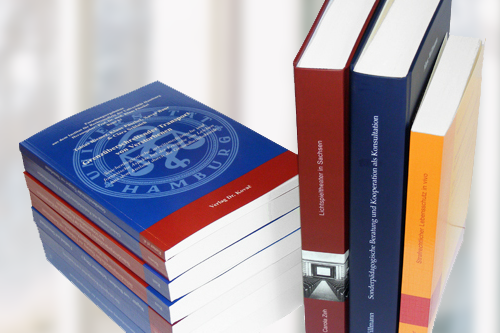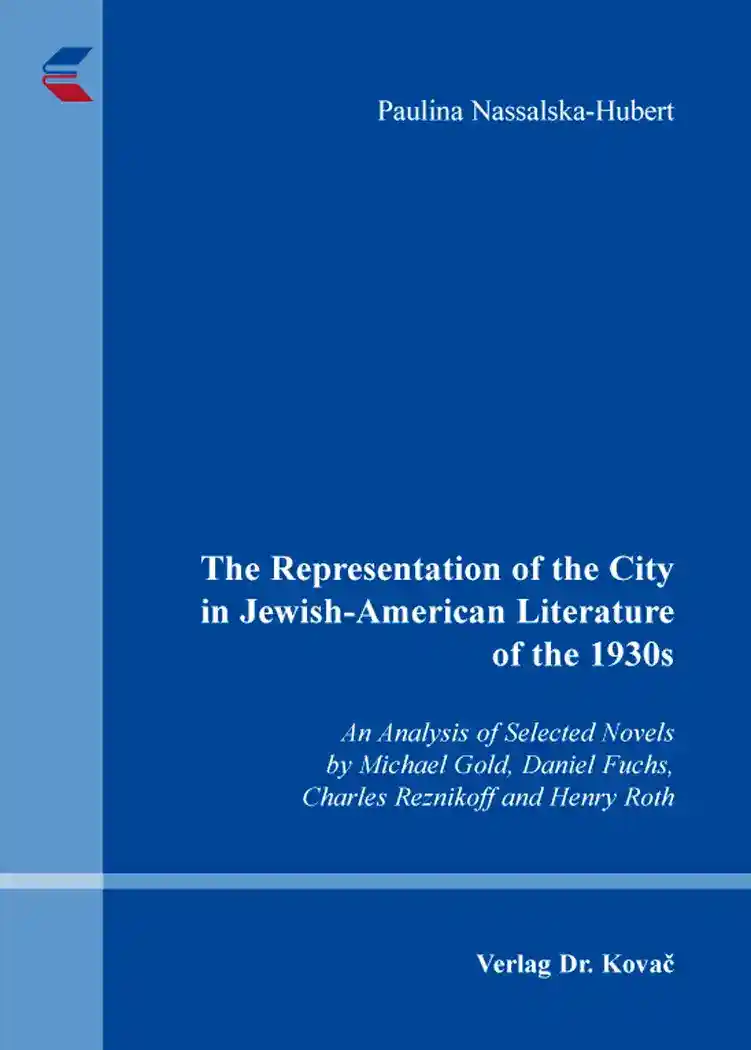Paulina Nassalska-HubertThe Representation of the City in Jewish-American Literature of the 1930s
An Analysis of Selected Novels by Michael Gold, Daniel Fuchs, Charles Reznikoff and Henry Roth
- in englischer Sprache -
Studien zur Anglistik und Amerikanistik, volume 29
Hamburg 2015, 296 pages
ISBN 978-3-8300-8640-6 (print) |ISBN 978-3-339-08640-2 (eBook)
About this book deutschenglish
The 1930s constituted a shift in the Jewish-American literature. It was the time when the first American-born Jewish authors, among them Michael Gold, Daniel Fuchs, Charles Reznikoff and Henry Roth, came to voice and began to give expression to their anxieties, fears, and anger. Their fiction was necessarily urban. Big metropolises, primarily New York, where the Jewish population gathered in masses, become here the stage where the drama of the coming-of-age in a multiethnic, multicultural and multilingual environment plays itself out. The urban space they show is naturally divided. One part occupies ‘home’, associated with the Old World, the immigrant parents and Yiddish. The other is the ‘street’, often a street of the ghetto, which stands for the challenges of the New World, the English language and culture. As its primary focus the author of this study chose the representation of the city in the following four novels: Jews Without Money (1930) by Michael Gold, Summer in Williamsburg (1934) by Daniel Fuchs, By the Waters of Manhattan (1930) by Charles Reznikoff, and Call It Sleep (1934) by Henry Roth. Questions that guided this research were: how is the city, or New York, represented in a literary form in each of the novels, as well as: what is the interplay between the domestic and the public space? Apart from the main focus at the literary vision of the city there are also additional aspects which the author has successfully managed to incorporate into her study. This research contributes substantially to the field of Jewish Studies, particularly with reference to the phenomena of spatiality. It sheds new light onto the Jewish-American immigrant novel as it deals with some of the forgotten writers of the decade – like Daniel Fuchs and Charles Reznikoff, as well as reveals aspects in the already well-researched works by Gold and Roth which have so far been neglected by literary critics. The literary analysis in this study has been preceded by a thorough investigation of the socio-historical phenomena which constituted a background for the creation of the four works. This part of the study has been divided into two chapters. Here important figures, historical phenomena, and ground-breaking concepts of the times are discussed, such as Louis Wirth and the “ghetto”, R. E. Park and E. Stonequist and the “marginal man”, Walter Benjamin and his ideas about city’s porosity and city flânerie, or Max Nordau’s “Luftmenschen”. All of these concepts are of considerable significance for the literary discussion that follows. The first chapter of the literary analysis is a brilliant study of Michael Gold’s Jews Without Money, in which the author has managed to transcend the conventional readings of the novel, which as a rule perceive Gold’s work in the tradition of the proletarian and radical fiction, and put into foreground some forgotten aspects of the novel. Particularly the parts of the study which focus on the various images of the city which has been distinguished by the author in Gold’s novel, such as the vision of the Lower East Side ghetto as a cultural palimpsest or as a circus, need to be emphasized here as worth reading. The same applies to the multiple literary references, as well as links to Judaic religious tradition and secular Jewish themes the author has detected in the text of the novel. The next chapter of the study constitutes is a thoroughly successful analysis of one of the unjustly forgotten, and hence under-researched, books of the decade – By the Waters of Manhattan by Charles Reznikoff. Here the author discovers astounding connections between the writer’s poetic vision of New York and the various locations which point to Jewish Diasporic life. Reznikoff’s New York is informed with these, so called, Jewish spaces of reference. The author of the study refers also to the concept of the Jewish Luftmenschen, which is inseparably tied to the world of the Eastern European shtetl, and brilliantly connects it with the figure of a typical marginal man of the times, a walker in New York, who is a main protagonist of the short novel. The chapter on Daniel Fuchs’ Summer in Williamsburg deserves equal attention as the preceding ones. Here the author of the study brings back from the literary oblivion a wonderful novel by another unjustly forgotten Jewish writer of the 1930s. The analysis takes the readers on a voyeuristic tour of the New York slums and allows them to get a glimpse of the violent world of the ghetto tenement. Through an aptly-chosen selection of scenes from the novel, the author of the study has succeeded in showing how Fuchs paints his literary vision of the urban horror. In the last part of the study the author has undertaken a daunting task of analysing Henry Roth’s novel, a once neglected work, meanwhile a praised and well-researched classic of Jewish-American literature – Call It Sleep. She has managed to complete this task masterfully by focusing primarily on those aspects of the novel which have so far escaped critics’ attention. While the author does not fail to mention the novel’s indebtedness to Freudian psychology or its extensive use of symbolism, she directs her discussion onto different topics and consistently asks about the image of the city in the novel. The vision of the city she investigates here is a modernist urban underworld where the private realm of “home” and public space of the “street” remain throughout the novel in an exciting interplay. It is a noteworthy, well-researched, well-structured, intelligent, and yet, at the same time, well-readable and comprehensible study, an absolute mast-read for all those interested in Jewish literature and Jewish-oriented themes. It is, without a doubt, also worth looking at by those concerned with the problems of acculturation, cultural marginality, and urban spatiality.Keywords
American ModernismEthnic ModernismGreat DepressionHome vs. StreetJewish-American LiteratureJewish Spaces of ReferenceMarginal ManNew YorkProletarian NovelThe GhettoIhr Werk im Verlag Dr. Kovač

Möchten Sie Ihre wissenschaftliche Arbeit publizieren? Erfahren Sie mehr über unsere günstigen Konditionen und unseren Service für Autorinnen und Autoren.
